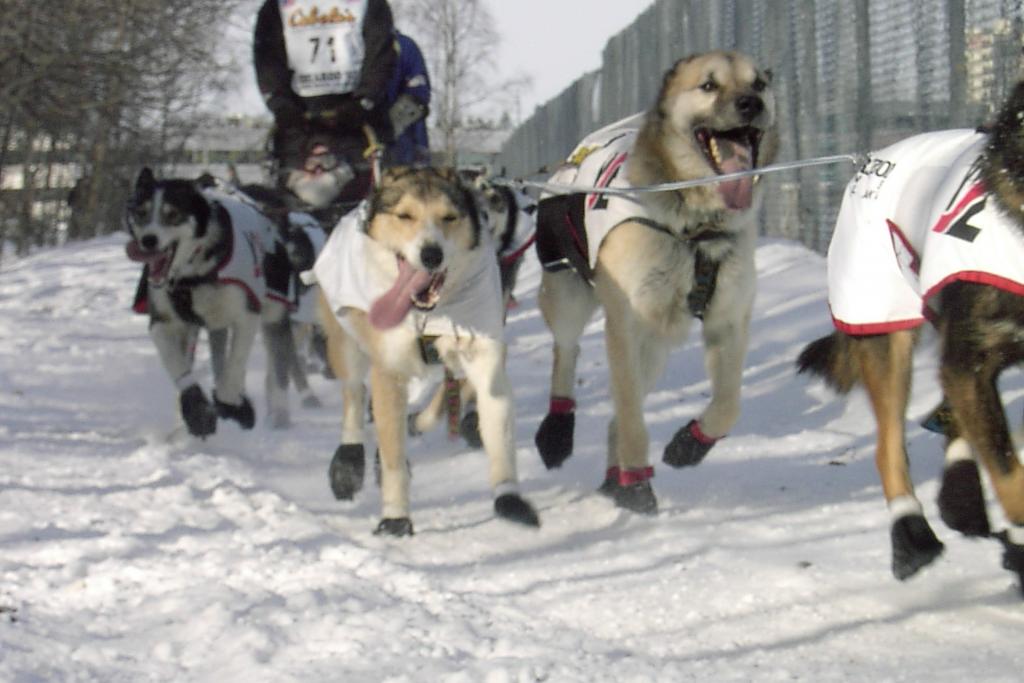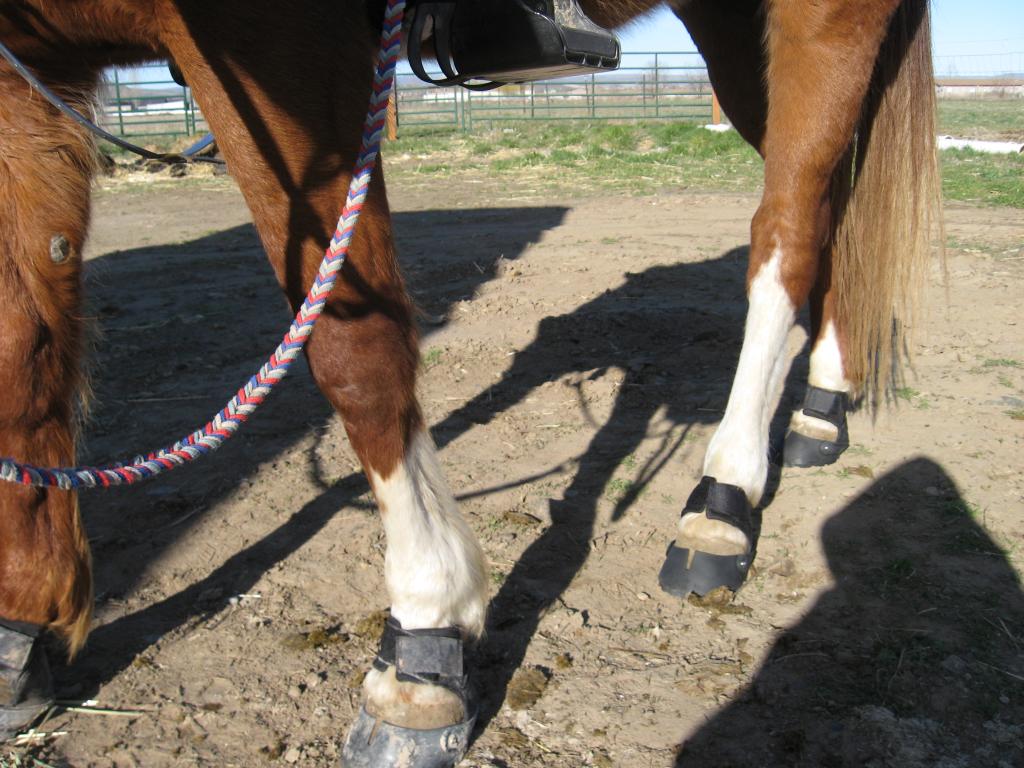Submitted by Karen Bumgarner, Team Easyboot 2015 Member
Are you an armchair musher? Are you addicted to following the famous Alaskan Iditarod like me? Some people call it the last great race, and I believe it to be so. Over a week, or maybe close to three weeks depending on your luck, of battling the elements and roughing it in the snow and ice, plus trying to take care of 10-16 dogs. Wow. This is the epitome of endurance, with some of the toughest people alive and I bow down to every one of them.

This great photo by Lynn Crance shows the pink dog booties of DeeDee Jonrowe’s team at the start of the 2015 Iditarod. Photo courtesy of Lynn Crance.
Imagine being a musher at the Iditarod. You have well over 1,000 miles of snow, ice and water to mush 16 dogs through, that’s 64 little foot booties to put on. A musher must pack on the sled a minimum of 8 boots per dog, 148 booties. And throughout the day they will remove boots, make sure no ice or snow is wadded up around puppy toes, check for wounds, place salve on paws to prevent cracking of the pads, and replace the boots. The snow and ice is extremely abrasive and it doesn’t take a rocket scientist to figure out these booties are essential to a healthy sound dog.
 A great shot of Allen Moore’s team as a Rookie in 2007, count the booties! Photo courtesy of Colleen Martin.
A great shot of Allen Moore’s team as a Rookie in 2007, count the booties! Photo courtesy of Colleen Martin.
Mushers use a “bootie horn”, much like a shoe horn, to enable fast replacing of boots. Dallas Seavy says “If I can save 20 seconds of time with every rebooting, it can take an hour and a half off my total Iditarod time.” And remember it could be thirty below zero while you are performing this task.
To me, the statistics are staggering. In 2015 there are 78 starting teams with a maximum of 16 dogs, equaling 1,248 dogs, times four that is 4,992 feet! A dizzying thought! In a vet check the veterinarians will examine these 4,992 bare unbooted paws. Just the lack of humidity in the air can cause the pads to crack, just like your fingers and what we call weather cracks. The vets look between the pads at the skin, and they may find raw spots. The mushers have different salves they use on the paws to help them heal, and the booties often enhance the salves ability to work well.
And each musher will often take over 3,000 boots with them to Iditarod. The boots are lightweight and made from cordura nylon. They fasten at the top with elastic and Velcro strapping which won’t damage the dog’s tendons. They run around $1.50 – $2.50 each so multiply that times 3,000. Ka-Ching.

Does this put booting your horses with Easyboot Gloves or Epics in perspective? Yes our hoof boots cost more per boot but look how long they last. We certainly don’t need 1,000 of them. Even if we traveled 1,000 miles chances are that we wouldn’t use more than a dozen boots. And thankfully we aren’t checking 64 boots at every vet check either. We only check 4. Usually in pretty decent weather conditions I might add. So next time you think that booting up those hooves is work, just be thankful you’re not an Iditarod musher.




